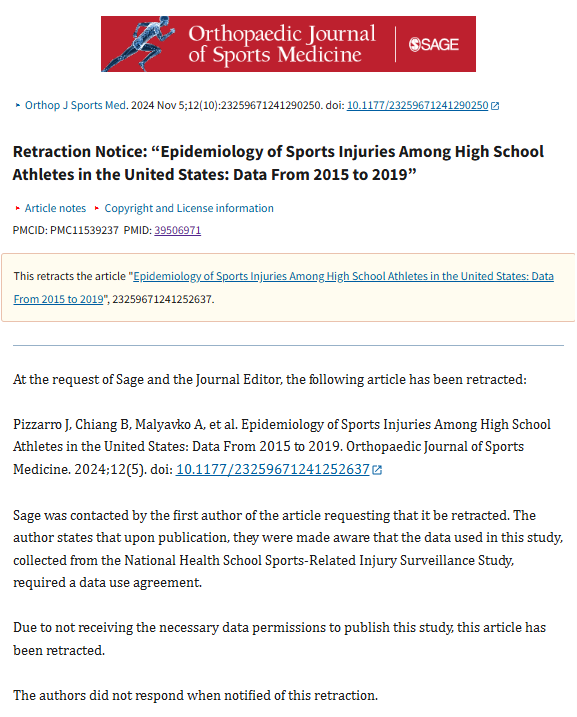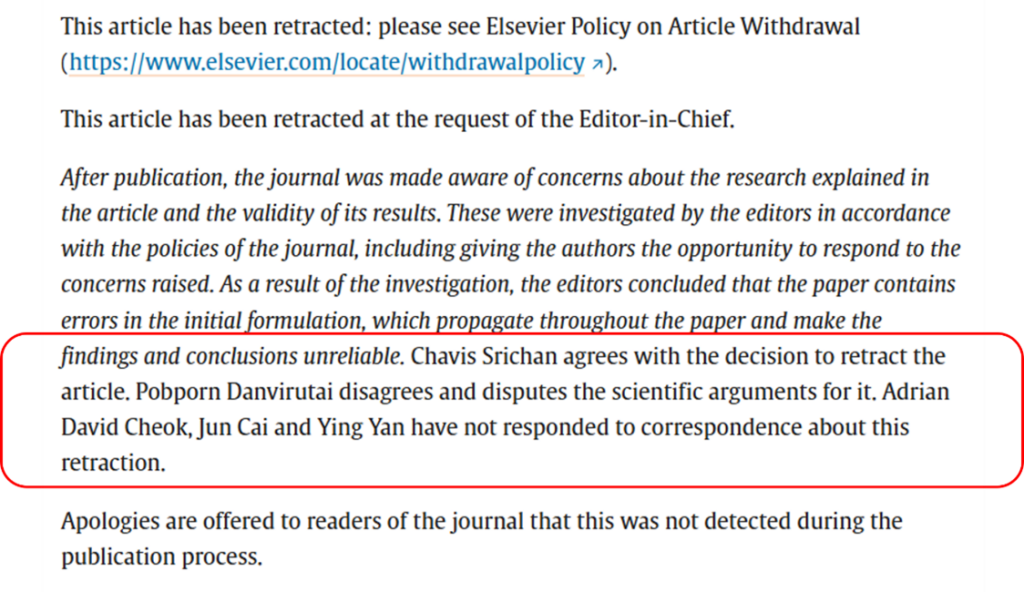Retractions are crucial for upholding the integrity of the published record. However, there is surprisingly little standardisation in how they are written, which has serious implications for scientific transparency, public trust, author rights, and the prevention of research malpractice. This article discusses how to write an informative retraction notice that effectively serves the academic community.
Indicate who initiated the process.
Was it the authors, editors, publishers, university, or readers? Authors are sometimes made aware of errors through post-publication review, such as comments on platforms like PubPeer. Details of such instances should be included in the retraction notice.1
Why is this important? The readers deserve to know what happened. This information will help them contextualise the retraction. In addition, retractions have become conflated with misconduct.2 This is problematic, as it may discourage authors who have made genuine mistakes from coming forward. Clearly indicating who initiated the retraction process can address this issue. As Dr. Quan-Hoang Vuong notes, “It benefits the authors who bravely admit their errors as much as their fellow researchers, who would look up to such candidness and realise not all retracted papers are related to scientific misconduct.”3 Conversely, failure to specify when a retraction is author-initiated may create unwarranted suspicion among readers.2
retractions have become conflated with misconduct. This is problematic, as it may discourage authors who have made genuine mistakes from coming forward.
Specify the cause.
Specify, in detail, why the retraction is occurring.
Why is this important? Distinguishing between retractions due to honest errors and those resulting from research malpractice, such as data fabrication or falsification, is essential. “No reason” retractions involving research malpractice generally result in little damage to the offender, thereby undermining the key deterrent for such practices.4
“No reason” retractions involving research malpractice generally result in little damage to the offender, thereby undermining the key deterrent for such practices.
Conversely, journals that issue “no reason” retractions deny authors the opportunity to explain their circumstances, and risk discouraging authors who have made genuine mistakes from coming forward, thereby undermining the self-correcting nature of science.2 Retraction notices that are not sufficiently informative may be “misleading, biased or skew information to offer a one-sided perspective.”5 Authors who retract their own work after losing confidence in their results should be commended, and detailed retraction notices will help facilitate this recognition.
Specifying the reasons for retraction can help prevent others from repeating the same mistakes.6 A recent retraction in the Orthopaedic Journal of Sports Medicine noted that data collected from the National Health School Sports-Related Injury Surveillance Study requires a data use agreement, which the authors had not acquired (see Figure 1). Others working in this field may be prevented from making the same error.

Figure 1. A retraction notice from the Orthopaedic Journal of Sports Medicine clearly specifying the reasons for an article’s retraction. Providing detailed explanations can help prevent others from making the same mistakes.
Indicate if there was consensus between the editors and authors.
According to the Committee on Publication Ethics (COPE) guidelines, the editor “should always have the final decision about retracting material.”7 However, if the authors disagree with the editor’s decision, they should have the right to “have their opinions properly heard and expressed.”8
if the authors disagree with the editor’s decision, they should have the right to have their opinions properly heard and expressed.
Why is this important? It indicates to the reader that due diligence was exercised and that the authors were given the opportunity to provide a rebuttal. There may even be a lack of consensus among the authors (see Figure 2), the details of which may be informative to the academic community. Additionally, there is a small, but not insignificant, chance that the editor may make the wrong decision or that an unfair or incorrect retraction could occur due to, for example, “business and other third-party interests.”9 By indicating a lack of agreement between the authors and editors, the reader is better equipped to assess the situation critically.

Figure 2. A retraction notice from Astroparticle Physics showing the lack of consensus among the authors. The first author agreed with the decision to retract the paper; however, the second author disagreed and disputed the scientific arguments for it.
Conclusion
Journals should regard the quality of their retraction notices as equally important as the content they publish. Producing a research paper is a time-intensive process, and retracting a paper without clearly specifying the reasons shows a lack of respect for that effort.8 Moreover, retractions are “historical documents”5 and carry significant implications for both the journal and the authors, warranting careful and thoughtful handling. Finally, as guardians of research integrity and the interface between scientists and the public, publishers have a responsibility to uphold fairness and transparency. Detailed retraction notices align with the growing movement toward more open and transparent science, serving as a means to communicate how science works5 and bringing the opaque world of publishing into the light for scrutiny.
Journals should regard the quality of their retraction notices as equally important as the content they publish.
Sources:
- Vuong QH. Reform retractions to make them more transparent. Nature. 2024; 582:149. https://doi.org/10.1038/d41586-020-01694-x.
- Kersjes T. No shame, no blame – How to make retractions work. LSE Impact Blog. 2024 Jul 3. Available at: No shame, no blame – How to make retractions work | Impact of Social Sciences [Accessed 2025 Jan 14].
- Vuong QH. Retractions: the good, the bad, and the ugly. What researchers stand to gain from taking more care to understand errors in the scientific record. LSE Impact Blog. 2020 Feb 20. Available at: Retractions: the good, the bad, and the ugly. What researchers stand to gain from taking more care to understand errors in the scientific record | Impact of Social Sciences [Accessed 2025 Jan 14].
- Cox A, Craig R, Tourish D. Retraction statements and research malpractice in economics. Research Policy. 2018 Jun 1;47(5):924-35.
- Teixeira da Silva JA, Vuong QH. Fortification of retraction notices to improve their transparency and usefulness. Learned Publishing. 2022 Apr;35(2):292-9.
- Kovacs M, Varga MA, Dianovics D, Poldrack RA, Aczel B. Opening the black box of article retractions: exploring the causes and consequences of data management errors. Royal Society Open Science. 2024 Dec 18;11(12):240844.
- COPE Council. COPE Guidelines: Retraction Guidelines. November 2019. https://doi.org/10.24318/cope.2019.1.4.
- Teixeira da Silva JA. Authors Disagreeing with Retractions: A Growing Procedural Concern? Persona y Bioética. 2023 Dec;27(2).
- Srholec M. What if your paper were retracted for no credible reason? Research Evaluation. 2024 Apr 19:rvae016.
